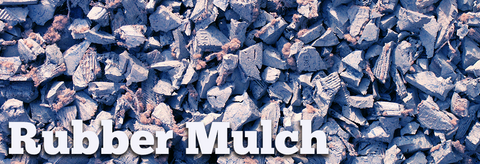June 27, 2016
Popular Mulch Alternatives

Rock

Hay

Rubber mulch

What Are the Different Types of Mulches and Their Benefits?
Mulches vary widely, each offering unique benefits and purposes for gardens, landscaping, or playgrounds. It's important to consider these differences and potential drawbacks before selecting a mulch.
What Are the Advantages of Organic Mulches Like Compost?
Organic mulches, sourced from various natural materials like trees and fallen leaves, are valued for their ability to decompose. Compost, made from kitchen scraps and other organic matter, breaks down to release nutrients into the soil, thereby nourishing plants.
How Does Rock Mulch Benefit Landscaping?
Rock mulch, which includes pebbles, river stones, and gravel, is ideal for adding texture and color to landscaping projects. Besides its aesthetic appeal, rock mulch is effective in forming borders due to its weight, helping to keep lighter mulches in place while providing insulation for plants.
What Is the Role of Hay in Garden Mulching?
Hay, particularly straw collected in bales, is used to blanket gardens during winter, offering warmth to delicate plants. It's also used in stables for horses. However, hay poses risks as it can easily catch fire and attract insects and rodents.
What Makes Rubber Mulch a Good Mulching Option?
Rubber mulch, a byproduct of scrap tires, offers a sustainable solution to waste management. In playgrounds, it provides unparalleled shock absorbency, while in gardens, it offers sufficient insulation. Its use helps in recycling discarded rubber tires, addressing environmental concerns.
What Are Other Alternative Mulching Materials?
Other mulching materials include peat moss, sawdust, paper, pine needles, fabric, and plastic. Each of these materials has its pros and cons for use in gardens, playgrounds, or landscaping. It's important to assess these benefits and drawbacks to choose the best material for specific needs.

Also in Rubber Mulch Blog

Embracing Eco-Friendliness by Choosing Rubber Mulch for Your Playground
June 17, 2025
“Reuse, Recycle, and Reduce” are three main aims when it comes to preserving the health of our planet. Rubber mulch definitely falls within their scope. Conserving resources, energy efficiency, and better health for kids are all rubber mulch benefits.

Effective Mold and Fungi Prevention: The Hidden Value of Rubber Mulch
October 31, 2024

Create Your Own Sensory Path with Rubber Pavers
October 28, 2024
shop
Copyright © 2025 RubberMulch.com - All Rights Reserved.






